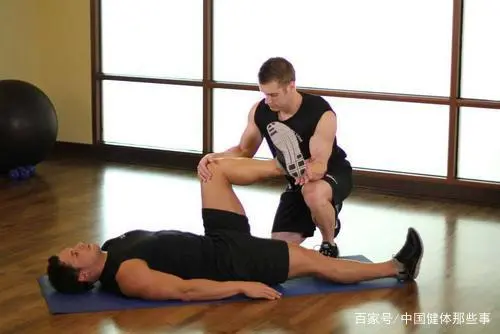Muscle soreness is a “blocker” for novices to exercise, but it is a “gospel” for veterans-you become sore and stronger. For trainers, it is easy to associate “muscle soreness” with “muscle strain” and “spasm”, but don’t get me wrong, you are healthy, it’s just that there are some small changes in your muscles. This small change is called DOMS (Delayed Onset Muscle Soreness). Should I workout with sore muscles

This is muscle damage caused by high-intensity training, especially in strength training newcomers. Because the same muscle group is stimulated with different movements repeatedly, the newcomer cannot adapt to this training method, and the muscles cannot withstand this intensity, so a physical reaction occurs.
Although this soreness is difficult, it is also a signal of muscle growth, which helps to increase strength and increase muscle circumference. So here comes the question:
Should we wait until the muscle soreness disappears before continuing to train? Actually, it’s not necessary! Three suggestions for you:

1: Differentiate the stages of muscle soreness
- Differentiate the stages of muscle soreness A smart trainer needs to understand both the movement and his body. Generally speaking, soreness is most likely to occur within 24 to 72 hours after training. Large muscle groups like legs may last longer, and the pain gradually decreases over time.
- Suggestion: Take a break and relax for 1 to 2 days after training. The muscles are the most sore in these two days. You can continue to arrange strength training from the third day. Choose a lighter weight according to your muscles.
2: Arrange training for different parts
In order to efficiently arrange training plans, professional athletes choose to train differently, which is to train different parts of the body separately, such as chest training on Monday, back training on Tuesday, leg training on Wednesday, and arm training on Thursday.
The benefits of differentiation training are obvious. Some muscle soreness will not affect the training of other parts. It saves a lot of time and allows you to gain muscle more efficiently and make more progress in a short period of time.
3: Cooperate with other sports
Strength training is more isolated to muscle stimulation, so the soreness is stronger, and the trainer can fully cooperate with other “less intense” exercise methods to achieve better sports shaping results.
For example, strength training on Monday, running/swimming on Tuesday, HIIT/yoga on Wednesday, and continuing strength training on Thursday. This arrangement is more efficient and does not waste time.
How to adjust the training plan to reduce the impact of muscle soreness?

1: Increase the frequency of exercise
Strength training tests persistence and taboo “three days of fishing and two days of netting”. People who train 3 to 5 times a week don’t feel much, but if you stop for a while and resume training, the muscle soreness will be more intense and it will take longer for the soreness to disappear.
If you are worried that muscle soreness will affect your normal activities, you should start with daily exercises and practice more frequently to make the muscles “resistance” to training.
2: Reduce training intensity
You can understand the relationship between training intensity and muscle soreness in this way: if you use a lot of weight, short rest time, more exercises, and long training time, the muscles will be stimulated more and it will be more difficult to recover, and muscle soreness lasts longer. You can start from the four points mentioned above to reduce the training intensity and make the muscles less sore.
3: Sufficient nutrition and rest
The best way to face muscle soreness is to rest and relax. Ensuring adequate sleep, relaxing mental state, doing more stretching and flexibility training, and maintaining a regular schedule will all help reduce the effects of muscle soreness.
At the same time, it is necessary to ensure a comprehensive nutritional supplement, not only intake of protein, carbohydrates and healthy lipids, but also vitamins, dietary fiber, trace elements, etc., to maximize the efficiency of muscle repair and reduce muscle soreness.
The above is all the content of today. I hope it will be useful to all training enthusiasts. Thank you for liking and reposting comments, so that more people can see. Read more updates about fitness on http://www.facefof.com
